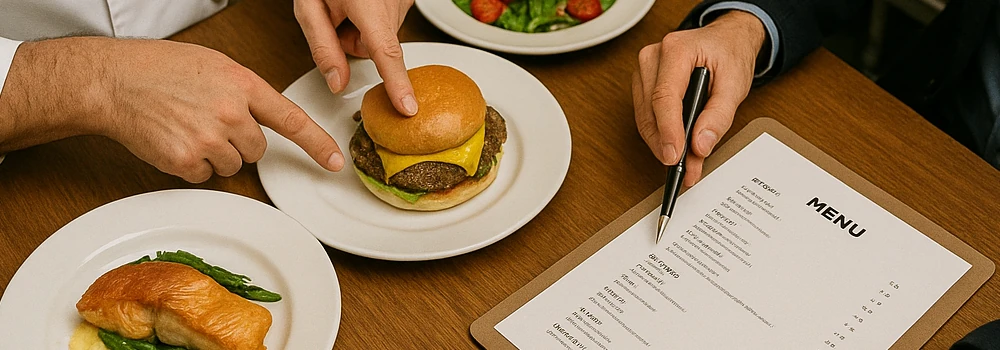
Walk into any busy kitchen and you’ll see it: the dance of efficiency—or sometimes, chaos. The best operators understand that fewer SKUs often mean faster preparation, cleaner execution, and improved profitability. But trimming your menu without cutting into revenue is an art form. It’s not about doing less; it’s about doing better.
Why Less Is Often More
Restaurant menus naturally expand over time. A weekend special turns permanent, a supplier pitches a “can’t-miss” new product, and the chef keeps experimenting. Before long, that tight, focused menu that once defined your brand becomes a patchwork of ideas. Storage fills up, prep slows down, and the kitchen starts juggling too much. The result? A team stretched thin, an operation that feels heavier than it should, and a guest experience that’s less consistent than it could be.
Reducing SKUs doesn’t mean sacrificing variety—it means eliminating redundancy. Think of it as clearing noise so your best dishes can shine. A smaller menu focuses your team, speeds up service, and highlights what your concept actually does best. The goal is to make fewer ingredients work harder across multiple dishes.
Step One: Analyze the Numbers
Start with your data. Pull your item-level sales reports and sort by volume and margin. You’ll immediately spot the “stars”—high-selling, high-margin items that deserve the spotlight. Then there are the “dogs”—low-margin, low-selling items that may need to go.
Pay special attention to mid-tier performers. Some may be buried under poor menu placement or uninspired descriptions. Before cutting them, consider a test: rename, replate, or reposition. If sales don’t improve, it’s time to move on.
Step Two: Cross-Utilization Is Your Superpower
Every operator wants to lower food cost, but cross-utilization is the secret weapon. Identify ingredients that appear in multiple dishes, and trim single-use SKUs that create complexity. If an item only shows up once and isn’t a brand-defining feature, it’s probably expendable.
Cross-utilization done right doesn’t make everything taste alike—it creates a common thread that ties the menu together. Think of it as a shared flavor toolkit: ingredients, sauces, and components that can be reimagined in different ways.
A great aioli, for instance, can elevate a sandwich, anchor a grilled entrée, or bring a flatbread to life. When used intentionally, those shared elements save prep time, reduce waste, and keep your kitchen running smoothly without sacrificing creativity. It’s not about repetition—it’s about harmony and smart use of what you already do well.

Step Three: Tell a Clearer Story
Guests crave clarity. When your menu is streamlined, it reads better, feels more intentional, and builds trust. Every item should support your brand promise, from pricing to plating.
If your concept is “modern comfort,” make sure every dish fits that description. If you’re “farm-to-table,” highlight your purveyors and seasonal rotation. Trim anything that doesn’t support the story you’re telling.
Step Four: Reinforce Through Training
A leaner menu requires a confident, knowledgeable team. When staff can describe each dish with enthusiasm and accuracy, they drive check averages and improve the guest experience. Make sure every server understands not just what’s on the menu—but why it’s there.
The Payoff
Restaurants that streamline typically see faster ticket times, reduced waste, and tighter inventory turns. Labor efficiency improves. Food cost drops. And most importantly, guests perceive more quality, not less.
Your best-selling items become your brand signatures—the craveable dishes that keep people coming back. In the end, menu simplification isn’t about shrinking your offering—it’s about amplifying what makes you great.
Because when your kitchen runs smoothly, your brand speaks more clearly, and your team operates with purpose, everyone wins—especially your guests.
.png)





.png)





